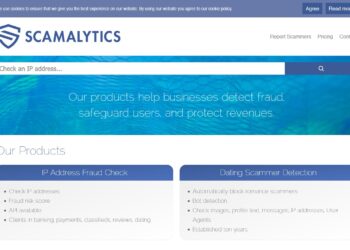Zero-day vulnerabilities whet the appetites of cybercriminals. As an exploit, these types of vulnerabilities are very susceptible to attacks because they are practically new so there will be no available patches or updates. Even anti-malware software won’t have any available new signatures to counteract any attacks that come through said vulnerability. It is for this reason that zero-day vulnerabilities are considered a major cybersecurity threat.
A report published by the MIT Technology Review showed that at least 66 zero-day vulnerabilities have been found in 2021. This is already double the number recorded in 2020 and is already considered as the most number of vulnerabilities found on record. And these vulnerabilities are found in almost all products, not just those with lower development budgets.
Just recently, a security researcher revealed that he found a zero-day privilege elevation vulnerability and a public proof-of-concept (POC) exploit for all versions of Windows. The said vulnerability allows attackers to gain SYSTEM privileges.
This exploit, unfortunately, affects all versions of Windows—Windows 10, Windows 11, and even Windows server 2022.
The Windows Zero-Day Exploit
The discovery of the Windows zero-day exploits started with the release last August of a security update to patch a “Windows User Profile Service Elevation of Privilege Vulnerability”, also identified as CVE-2021-34484. The vulnerability was discovered by Abdelhamid Naceri, a security researcher.
Naceri discovered that the patch was not secure enough and he was able to bypass the update using an exploit that he eventually released on GitHub.
According to Naceri, he described in a previous report a bug that can be used to exploit the user profile service in order to create a second junction. But Naceri said, Microsoft did not patch what was indicated in the report but the impact of the POC instead – essentially patching a symptom not the bug itself. This meant that the exploit could be revised in order to create another junction and still get the same privilege elevation.
The one good thing about this exploit is that it’s not as readily accessible. One has to know another user’s username and password to be able to activate the vulnerability. This means it won’t be used too much in attacking networks.
But while this specialized condition to exploit a vulnerability can give administrators a huge sigh of relief, it also highlights the immense danger organizations face in case of a zero-day vulnerability in one of the apps they use crops up, and exploiting it is going to be easy.
Protecting the network from Zero-day issues
The Windows exploit clearly illustrates the need for effective methods to counteract vulnerabilities that could expose an organization’s network to malicious actors. Zero-day exploits fetch large sums in the market. There are even some bug bounty programs that have reached $2 million. As stated earlier, cybercriminals value zero-day vulnerabilities a lot because these types of vulnerabilities have no known fixes since they are new and updates to patch these holes usually won’t be released immediately.
But while zero-day vulnerabilities are hard to detect, you can still protect your network from getting affected negatively by these potential exploits.
RASP to the rescue
One of the most effective deterrents to zero-day vulnerability exploits is Runtime Application Self-Protection. Essentially RASP allows organizations to stop the attempt of cybercriminals to illegally access applications and data within the enterprise. RASP technology is designed to be included with the application or application runtime environment, which would then allow it to control the execution of applications, as well as to detect vulnerabilities, including those that are considered zero-day exploits. Additionally, RASP will also prevent zero-day attacks.
As a solution, RASP is designed to bring a high level of security to any application, regardless of where it is located within the server. In actuality, the fact that RASP technology is located in the server gives it a distinct advantage as it is able to detect or even block attacks, and also be able to lessen the effects of any attacks from cybercriminals and malicious software. The key to its effectiveness is the ability to analyze the behavior of an application, as well as the context by which it is behaving. This is the key to it being able to detect attacks through zero-day vulnerability exploits.
The great thing about RASP is that it will continuously monitor the behavior of applications, giving cybersecurity experts a tool that will protect the network 24/7 and thus prevent any kind of malicious behavior, including data theft.
Exceptional benefits of RASP
Implementing RASP brings with it a number of significant benefits to the organization.
Non-human intervention
RASP is a set it and leave it solution. Upon implementation, it will not require human intervention for it to run and fulfill its functions. This is less taxing for organizations that have limited cybersecurity manpower
Lower costs
While the non-human intervention features of RASP already mean operational cost savings, it also has other cost-saving benefits. For example, deploying RASP is significantly cheaper compared to setting up a web application firewall (WAF). Secondly, you don’t need a dedicated or new server to run it as it is deployed on existing servers. Third, RASP monitors the behavior of the application itself, so it doesn’t require a lot of tuning verification or model building to run.
Unprecedented information on application layer attacks
RASP will readily provide information on who is instigating the attack on your network, including the technique used or which one of the applications or your data is being targeted. This gives your cybersecurity teams awesome visibility that your development people can instantly use as important information to stop any attacks by having valuable data in development and testing solutions.
Conclusion
Zero-day vulnerabilities are a threat that is not easy to prepare for, as evidenced by the exploit found across all iterations of Microsoft Windows. But with the implementation of a solution like RASP, the organization can provide a secure and effective layer of protection against the potential dangers of a zero-day exploit attack.






